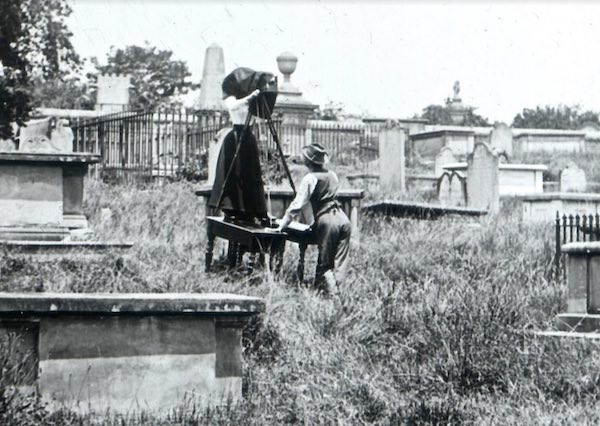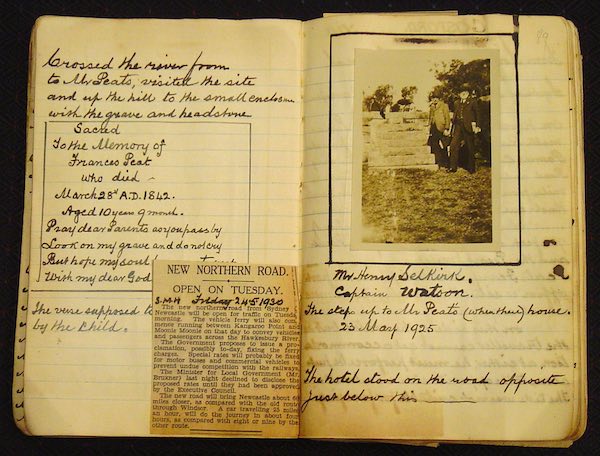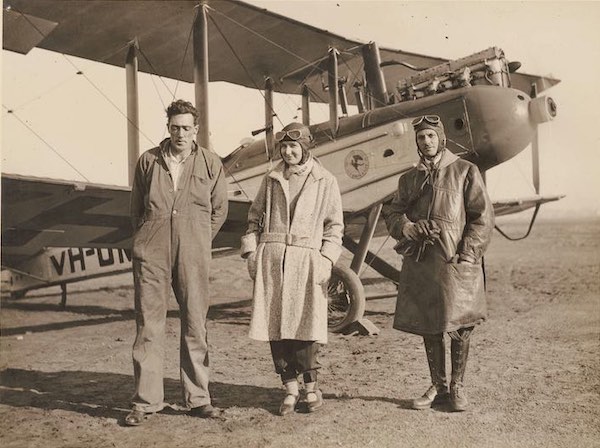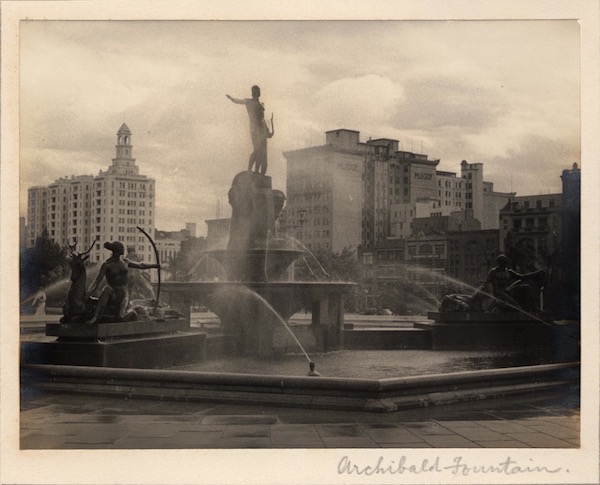Library Collections
The C.H. Bertie and Hugh Wright Memorial Library contains a valuable research collection of more than 60,000 items in Australian history. The library specialises in NSW local history and includes an extensive collection of written and pictorial resources.
The book collection includes 24,000 research and reference titles specialising in NSW local and community history. The collection is held on-site at History House, making it very popular with researchers who can easily browse and access these items. Several significant contributions are held in our Rare Books Room, which includes first editions and original works dating back to 1772.
The library collection includes photographs, postcards and glass slides; manuscripts; press clippings; ephemera; maps; journals and newsletters of our affiliated organisations; a complete set of the Society’s Journal of the Royal Australian Historical Society and History magazine. You can download more information on our collections before planning your library visit.
The Collections
Learn about the most important items in the collection as highlighted in our 2014 Library Significance Assessment, funded by a National Library of Australia Community Heritage Grant.
Your Title Goes Here
The Foster Collection
We all realise how rapidly the old is giving place to the new, and only by means of pictures will those who come after us know what Sydney was like once upon a time. And in looking at pictures of quiet streets, quaint old homes, beautiful gardens and fine old trees, they will understand why many today still call this queenly city ‘Dear old Sydney’ – Mrs A.G. Foster, Odd Bits of Old Sydney (1921)
About the Fosters
Married couple Josephine Ethel Foster (1870-1955) and Arthur George Foster (1861-1924) shared a passion for photography and Australian history. Arthur and Ethel were among the first members to join the Australian Historical Society (later RAHS) in 1901. They were awarded RAHS Fellowships in 1921 and 1924, respectively, to honour their contributions to the organisation and Australian history.
The Fosters spent considerable time and energy preserving old Sydney by photographing iconic buildings that were to be demolished to ‘give place to the new’. This dedication ensured that traces of lost places remain, especially that of Sydney’s vanished burial ground – Devonshire Street Cemetery.

Mrs A.G. Foster taking photographs in the Devonshire Street Cemetery [RAHS Collection]
In January 1901, the NSW State government announced its plans to clear the cemetery to make way for Central Station. The Fosters responded by dedicating every weekend for two years to drawing monuments, transcribing headstone inscriptions and taking photographs before the bodies were exhumed and reinterred in other sites. Dead Central, the 2019 State Library of NSW exhibition, drew heavily on the Fosters’ comprehensive documentation of Devonshire Street Cemetery to explain the historical and cultural significance of the site.
About the Foster Collection
After the death of Ethel Foster, the RAHS Library acquired her collection of over 250 books, 30 volumes of press clippings (scrapbooks) and 381 glass slides.
The scrapbook collections are a combination of Foster Press Clippings and Pamphlets. Assembled between the 1880s and 1930s, these 51 volumes highlight important historical events, as well as the social history of NSW. They include newspaper clippings, souvenir booklets and small monographs, invoices and accounts, handwritten correspondence, lists, plans and notes, postcards and photographs, rail and tram tickets and invitations. The contents of the scrapbooks are a reflection of Sydney’s history and also relate to what happened in Ethel Foster’s life at the time.
The glass slides collection features 381 slides of early Sydney and 70 rare photographs of the Sandhills Cemetery, which accompanied ‘The Sandhills: An Historic Cemetery’ by A.G. Foster, read before the Society in 1918.
The photograph collection contains images of early Sydney, landmarks and buildings and three bound volumes containing 75 prints from the Devonshire Street/Central Station project.
References
Elise Edmonds, ‘Dead Central,’ State Library of NSW, https://www.sl.nsw.gov.au/stories/dead-central, accessed 24 January 2023.
A.G. Foster, Odd Bits of Sydney, Tyrrell’s, Ltd, Sydney 1921.
A.G. Foster, ‘The Sandhills: An historic cemetery’, JRAHS Vol. 5, Pt. 4, 1919, pp. 153-195.
Anne-Maree Whitaker, ‘Foster, Arthur George (1861–1924)’, People Australia, National Centre of Biography, Australian National University, http://peopleaustralia.anu.edu.au/biography/foster-arthur-george-27600/text34993, accessed 24 January 2023.
Anne-Maree Whitaker, ‘Foster, Josephine Ethel (1870–1955)’, People Australia, National Centre of Biography, Australian National University, http://peopleaustralia.anu.edu.au/biography/foster-josephine-ethel-27601/text34995, accessed 24 January 2023.
A profile on Ethel Foster is part of our Women’s History Month webpage.
The Watson Collection
About Watson
Born in Devonshire, England, Captain James Henry Watson (1841-1934) served with the British militia and was promoted to captain in the 1st Infantry Regiment, New South Wales, in 1889, later resigning his command in 1892. As well as his military service, Watson had a varied business career. He worked in Victoria, England and India, including time spent in the service of the Great Indian Peninsula Railway Co. In 1880 he moved to Sydney to become a department manager for David Jones. He used the business skills he learnt from his employers to establish his own company in 1889 – Beard, Watson & Co., carpet warehousemen.
After his successful business career, Watson retired in 1901 to become a significant contributor to Australian history. He joined the RAHS (then Australian Historical Society) in 1904 and immersed himself in Australian history research, answering members’ family and local history queries and exploring cemeteries for genealogical information. Watson’s research interests included the history of churches, shipping and early Australian towns and families. He had twenty-nine papers published in the Journal of the Royal Australian Historical Society on his favourite topics.
In 1916, Watson received a RAHS Fellowship to honour his contribution to the organisation and Australian history. He served as President in 1909, 1926 and 1927. Businessman and historian Watson was also known as a style icon of his time:
… his erect figure and springy step as he passed along the city streets being the envy and admiration of those who knew him. – Oddfellows Magazine, 15 June 1930
About the Watson Collection
The collection includes 230 glass lantern slides that showcase early NSW history; 32 volumes of press clippings containing newspaper cuttings, historical papers and photographs; 20 manuscripts; 80 photographs of the Sydney region and the RAHS excursions; museum objects and over 60 books. The books include a rare first edition of David Collins’ An Account of English Colony in NSW (1798) and an original copy of William Well’s A Geographical Dictionary (1848). In 2002 the RAHS purchased a small 193-paged journal that recorded Watson’s accounts of RAHS excursions between 1924-1926. The volume includes photographs, letters, handwritten and typed accounts, maps, newspaper clippings and a list of the excursionists.

James Henry Watson’s ‘Excursion Journal’ [RAHS Collection]
References
K.R. Cramp, ‘Captain J.H. Watson. A Life Sketch and an Appreciation’, JRAHS Vol. 20, Pt. 6 (1934): pp. 432-439.
Ian Jack, ‘From the Presidential Desk’, History Magazine, Jun. 2004.
Diane Langmore, ‘Watson, James Henry (1841–1934)’, Australian Dictionary of Biography, National Centre of Biography, Australian National University, http://adb.anu.edu.au/biography/watson-james-henry-9002/text15773, published first in hardcopy 1990, accessed online 24 January 2023.
Oddfellows Magazine, 15 June 1930.
The Adastra Aerial Survey Collection
The engine sings its roaring song. The evening sun slants under the wing and bathes you with contentment as you idly gaze on the garden country slipping by – Colin Simpson, ‘As Seen From the Skyway’, The Sun, 22 January 1933
About Adastra
In 1930, Captain Frank William Follett (1892-1950) and Henry Talbot Hammond (1894-1982), a fellow First World War veteran, founded the Adastra Airways Pty. Ltd. Both men served in the Australian Flying Corps and worked as flying instructors after the war.
Frank’s younger sister, Evelyn Mary Follett (1902-1977), was also a founding director of the company. Evelyn, the third woman in Australia to obtain a private pilot licence, was one of six women pilots who provided an aerial escort for British aviator Amy Johnson when she arrived in Sydney on 4 June 1930.

Two of Adastra’s founders, Miss Evelyn Follett (centre) and her brother, Captain Frank Follett (right), pose with an unknown engineer and an Aero Club of New South Wales Airco DH-9 [The Hood Collection, SLNSW, ML ref. PXE 789 vol. 6 no. 43]
Adastra began as a flying school at Mascot Aerodrome, now the Sydney (Kingsford Smith) International Airport. In addition, it operated a regular airline service between Sydney and Bega and became known as a pioneering company in civilian aerial photographic surveys. In 1939, Frank Follett left Australia to study the latest techniques in aerial photography in England, the Netherlands, Switzerland and Germany, returning to Australia just before the outbreak of World War II.
Adastra’s aerial surveys, which captured Australia’s post-war development, are a unique historical resource. During the Second World War, Adastra was the only private company to participate in an emergency program to map Australia. At the end of the war, the company continued to receive government contracts, including one to survey the entire Darling River. Due to financial difficulties, Adastra was purchased by East-West Airlines on 1 April 1973 and then shortly ceased operating.
About the Adastra Aerial Survey Collection
The Wyong Museum and Wyong Historical Society donated the collection in 2011, a few months before an arsonist almost destroyed historic Alison Homestead, where the museum stored and displayed its collection. This collection is a series of approximately two hundred negatives and glass plate images from 1936 to 1938, primarily aerial photographs of Sydney and the south coast of New South Wales. It also includes thirty aerial images of Port Moresby. Most of the photographs were taken by Frank Follett, Peter Payens (1914-1994) and Lesley Charles Gordon Lavender (1905-1994). A selection of images from the collection can be viewed on the RAHS Flickr or by contacting the librarian. The State Library of NSW and National Library of Australia collections also hold items related to Adastra Airways.
References
Ron Cuskelly, ADASTRA Aerial Surveys: The story of the company, its aircraft and its people [electronic resource], 2003, http://nla.gov.au/nla.arc-41516, accessed 13 October 2020.
Henry Hammond & Mel Pratt, Henry Talbot Hammond interviewed by Mel Pratt for the Mel Pratt collection [sound recording], 1974, http://nla.gov.au/nla.obj-214893317, accessed 13 October 2020.
Sheila Mann & Department of Aviation, Australia, The girls were up there too: Australian women in aviation (Department of Aviation Australian Government Publishing Service Canberra, 1986).
Phil Morley, ‘Arson attack razes Alison Homestead’, Wyong District Pioneers Association, https://alisonhomestead.wordpress.com/2011/12/10/arson-attack-razes-alison-homestead/, accessed 30 September 2020.
Colin Simpson, ‘As Seen From the Skyway’, The Sun, 22 January 1933, p. 17.
G.P. Walsh, ‘Follett, Frank William (1892–1950)’, Australian Dictionary of Biography, National Centre of Biography, Australian National University, http://adb.anu.edu.au/biography/follett-frank-william-6203/text10661, published first in hardcopy 1981, accessed online 29 September 2020.
The Osbourne Collection
They provide a unique insight into the daily life of the areas photographed from the perspective of the man or woman behind the lens. – Graham Sciberras, ‘A gift of opportunity’ (2014)
Background
The Osborne collection is a series of more than 400 photographs donated to the RAHS in 2011 by Lyle and Jennie Osborne. The collection was stored in their Narellan Vale family home for over twenty years. At the time of the donation, the Osbornes were moving house and no longer had the space to keep the collection. Knowing the items’ valuable cultural and historical significance, they contacted the RAHS, where the photographs have been ever since.
As for the prolific photographer? Their identity remains a mystery.
About the Osborne Collection
The collection consists of over 400 photographs, originally in seven albums, from the early 1920s to the late 1930s. The photographs are primarily of the City of Sydney and surrounding places such as the eastern suburbs. Among the photographs are several images of Newcastle, the Illawarra, the Central Coast and a separate album containing Tenterfield, Inverell, Picton, Boohoo Boonoo Gorge, Brisbane, and travels as far as Malaysia. The collection is significant for depicting Sydney in the interwar years. The photographer not only captured people and places of the city but often assigned poetic names to these images – for example, Sydney’s brand-new Harbour Bridge was christened ‘A Symphony in Steel’. It is unfortunate that the avid photographer’s identity is unknown.
All the photographs of Sydney and its surrounding regions can be viewed on the RAHS Flickr or by contacting the librarian.

Archibald Fountain, c.1920s-1930s [RAHS Osbourne Collection]
References
Graham Sciberras, ‘A gift of opportunity – the Osborne Collection’, History Magazine, Sept. 2014.
The Affiliated Societies Serials Collection
Such local history, when contextualised, enriches elements of national or state history. Sometimes it helps to rewrite the historical narrative. – Pauline Curby and Virginia Macleod, ‘RAHS Library Significance Assessment’ (2014)
About the Collection
The RAHS has over 390 affiliated societies across NSW and beyond. The Affiliated Societies Serials Collection consists of journals, newsletters, bulletins, leaflets, magazines and annual reports unique to each society. The RAHS Library has well over 500 affiliated society serials dating back to the mid-1930s and is considered the state repository for this collection. Though the library has collected these serials for the last 95 years, the change from hard copies to e-copies in 2013 has made the collection more accessible.
The collection features many images, interest stories, and histories of NSW communities. The spike in interest in local and family histories in the 1960s-70s was and still is reflected in each series that the societies produce. The focus on community life and connection with the past is especially significant. The collection’s documentation of local history research and activities is unprecedented and rarely found in larger collecting institutions. Most publications in the library are printed, photocopied, or online. Sizes vary, and some are hard copies bound by the RAHS.
This unique repository of local history can be accessed by contacting the librarian.
